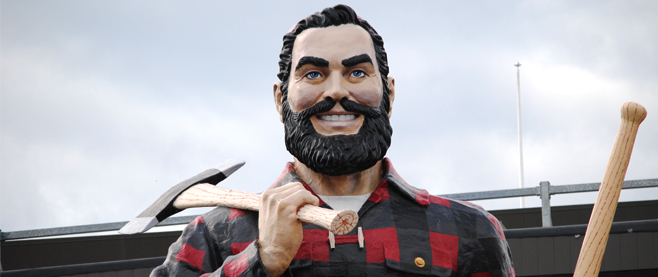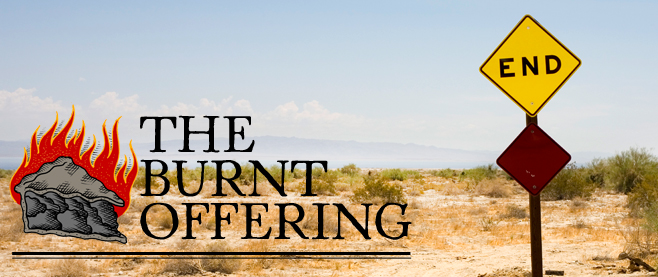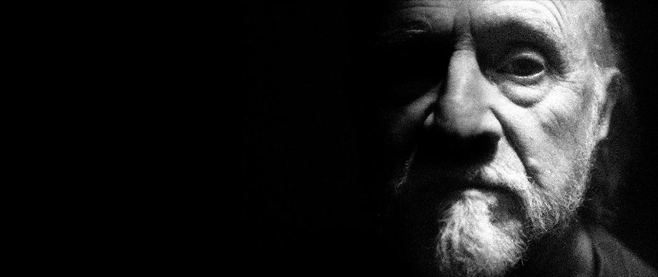
Living in Derry, Maine
For a long time, Stephen King has been, in one way or another, a very important part of my life.
I was 13 years old when I discovered the writer for the first time. My cousins were pretty psyched about a mini-series debuting on ABC called The Stand. From the opening moments, where Charlie Campion ran to his wife Sally, hoping to escape before the virus spread, I was entranced. Blue Öyster Cult’s “Don’t Fear the Reaper” played out over the opening credits and I stared in horror as Captain Tripps spread across the nation.
[pullquote]Derry is the haunted home of It, the evil force that landed millions of years before humans evolved.[/pullquote]
I asked my cousins if I could borrow the novel, which they gladly handed over, and during the next week I poured my way through all 1,153 pages. I used our newly-purchased VCR to record the series so I could watch it only after I finished the book. I remember a classmate of mine looking at the book, wide-eyed, telling me that if I finished it, he would have eternal respect for me.
The TV series was great, but King was better. Over the next few years, I read one book after another. and I spent a week and a half one July reading the remaining seven or eight novels I had missed. My mother bought me the paperbacks and, on a trip to, during and from North Carolina, I polished off one book, tossed it aside and picked up the next. It was then I learned how lucky I was to not have car sickness.
My love of Stephen King continued through my high school years, influencing me to attend the University of Maine, where King had been a student, teacher and philanthropist. One of my first weeks on campus, I urged my new friends to take me into Bangor to see his house and there, outside the wrought iron gates adorned with bats, spiders and a three-headed metal dragon, I snapped picture after picture.
I graduated in 2003 with a degree in Secondary Education and landed a job at the school where King taught when he published Carrie, Hampden Academy. My wife and I moved into an apartment in Bangor, just around the block from King. I first met him at a drug store a mile down the road, just after he finished The Dark Tower series. When I congratulated him on the task, he said, “Well, it almost killed me,” and I laughed nervously, then dropped the name of a person with whom I knew he was personal friends. We chatted about our mutual acquaintance for a minute, then I stumbled away, drunk with stardom.
I saw him in different spots over the next few years, occasionally at the florist shop next door to us, as he sauntered up with his corgi in tow, circumventing the main entrance to sneak in the side to get a quick bouquet. I bumped into him at the Corner Store on Hammond Street where I helped him retrieve a stubborn quart of creamer that refused to be removed from the glass refrigerator. It was about this time that I started connecting the dots between the fictional town of Derry, Maine, and my home in Bangor.
Derry has been the central locale in many different Stephen King novels. The town appeared as the centerpiece of It and found its way into many more of his books: Insomnia, Bag of Bones, Dreamcatcher and even his more recent releases, the novella-filled Full Dark, No Stars and the science fiction love story 11/22/63. Derry is the haunted home of It, the evil force that landed millions of years before humans evolved.
[slide]
Bangor has its own sordid history. In 1937, gangster Al Brady was gunned down on Main Street by FBI agents as he tried to purchase weapons at a sporting goods store. A simple stone plaque marks the spot where Brady met his end in a hail of gunfire. Every year, Bangor reenacts the incident, to the delight of visitors and townsfolk alike. In 1984, a gay man named Charlie Howard was beaten and thrown over the State Street Bridge by a group of men who had been following and harassing him the length of downtown Bangor. Residents mark the occasion by walking down to the bridge every July 7th and tossing white flowers into the water. It’s known as “Diversity Day” in Bangor.
As a Bangor resident, I’ve seen all the sites mentioned in Stephen King’s Derry novels. I’ve walked to and been inside The Standpipe, a fifty-foot structure that houses a tank of over 1.7 million gallons of water. Outside is the pink marble water fountain where Stan Uris is bird-watching before being lured into The Standpipe by circus music and balloons. The Standpipe exploded and flooded downtown Derry in It.
I’ve walked across the Main Street Bridge where Adrian Mellon was tossed over by homophobic locals, like Charlie Howard, then eaten by Pennywise the Clown. I’ve been on Witcham and Jackson streets where Georgie Denbrough had his arm severed when he reached into a storm drain to retrieve a paper boat. I’ve stood before the Paul Bunyan statue that came to life in the novel, though now the old lumberjack is relegated to staring at a slot casino that blocks his view of the waterfront. I’ve visited the Derry library and stood in the entryway where Bill Denbrough saw Pennywise float balloons towards the rotunda ceiling.
My wife and I even wandered into The Barrens, a wooded area that leads to a sewer pump station where It lives. Our adventure was cut short by the number of tents and shanties we found, where homeless people watched us with hungry eyes, perhaps too intimidated to come after us because of our lean, hundred-plus pound black dog (who looks a lot like a panther, save for his Labrador face).
[pullquote]No other literary city has felt as real to me as Derry.[/pullquote]
I have also worked with characters in It. The novel includes several “interludes” that fill in the rich history of Derry. One of those is about a card game ended by a maniac wielding an axe. The men he cuts down – Tinker McCutcheon, Floyd Calderwood, David “Stugley” Greneir and Eddie King – are former and current Hampden Academy employees. McCutcheon was Stephen King’s department head when he worked at the school and Calderwood was a teacher with a long history at the Academy. David Grenier is based on our assistant principal who retired last year, and Eddie King is based on a history teacher who still works with us.
Why point out all these references? Because no other literary city has felt as real to me as Derry. I’ve seen Gatsby’s East and West Eggs and I’ve traversed Chuck Hogan’s Charlestown (as referenced in Prince of Thieves) but these do not have the heavy, haunted weight that Derry does. I no longer live in Bangor, but I still drive to it at least twice a week, either for groceries or comics. The newer part, an expanse of sprawling chain stores, is best avoided, especially from the middle of November to Christmas, but the old part, the haunted part, I visit weekly. Al Brady died right in front of the comic shop where I buy my weekly books.
I feel the ghosts of Derry on every visit to Bangor. Whether it’s chugging up or down Hammond Street (called Up-Mile Hill in It), or sitting in the shade at Bass Park (Bassey Park in King’s novels), the city has a palpable aura about it.
I have never seen a clown under a bridge.
But that doesn’t mean I don’t look every time.
———
Brian Bannen’s asthma inhaler is battery acid, so you better follow him on Twitter @Oaser.





